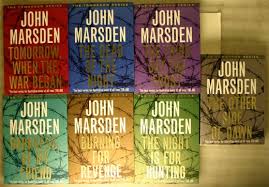On colours
When you learn a new language, colour names are among the basic vocabulary you’re taught in the early lessons. Yet different cultures and languages don’t divide up the colour spectrum in the same way, nor into the same number of basic chunks. Cannylinguist points to an interesting recent article in Scientific American on the topic. [UPDATE: This article by Tuomas Tanner gives a very good overview of the theory of the evolution of colour classifications in languages.]
For the English speaker learning Spanish, what are purple and brown?
Purple
The Espasa Calpe's definition comes closest to my observations in the wild; “morado.” Neither violeta, púrpura nor lila are mentioned.
My edition of the Oxford does give violeta, and qualifies morado as bluish purple and púrpura as reddish.
The Gran Larousse gives morado and púrpura, but violeta is only listed for purple as a noun, not an adjective.
In Mexico, the word I hear most often in conversation is morado. Púrpura never, and violeta very seldom. In contrast with the Oxford definition, morado extends into reddish purple, to the point where colours that in English I’d call maroon or dark red are also denoted by morado. What’s more, when a person blushes, they do not turn rojo, but morado.
Pale or light purple is invariably lila, never morado claro. Lila means “lilac,” but in English, I wouldn’t call “lilac” as basic a colour name as lila is in Spanish. “Mauve” or “light purple” would be my choice in situations where I’d have to say lila in Spanish if I don’t want to invite a puzzled stare followed by, “Ah, you mean lila?”
Brown
The word I learned for “brown” in Spanish class was pardo, but in Mexico I’ve only ever heard it in a single collocation: “oso pardo.” In general, “brown” is color café: not “café” but “color café.” Actually, “color” is used with colours much more than in English. Not “a red dress,” “a blue jacket,” “a black door,” but a “red-coloured dress,” a “blue-coloured jacket” and a “black-coloured” (or sometimes “black-painted”) door. With “café” it makes the most sense; the “coloured” isn’t so redundant because it eliminates any confusion with the beverage coffee.
Brown hair, though, isn’t color café but castaño (chestnut). Brown sugar and brown skin are moreno. Brown eyes that are very dark are ojos negros. Yes, we might say “black eyes” in English, too, but I think we’d be more likely to call them “very dark brown” to avoid any ambiguity. A (bruised) black eye is an ojo morado. In many other Spanish-speaking countries, “marrón” is the normal word for brown, (and indeed it’s the first option given by the dictionaries) but in Mexico marrón is reddish-brown, according to my informants.
Dark and light colours
While light colours are claro, just as in English, dark colours are not called “dark,” but “strong”; azul fuerte, verde fuerte, etc.
Labels: vocabulary



